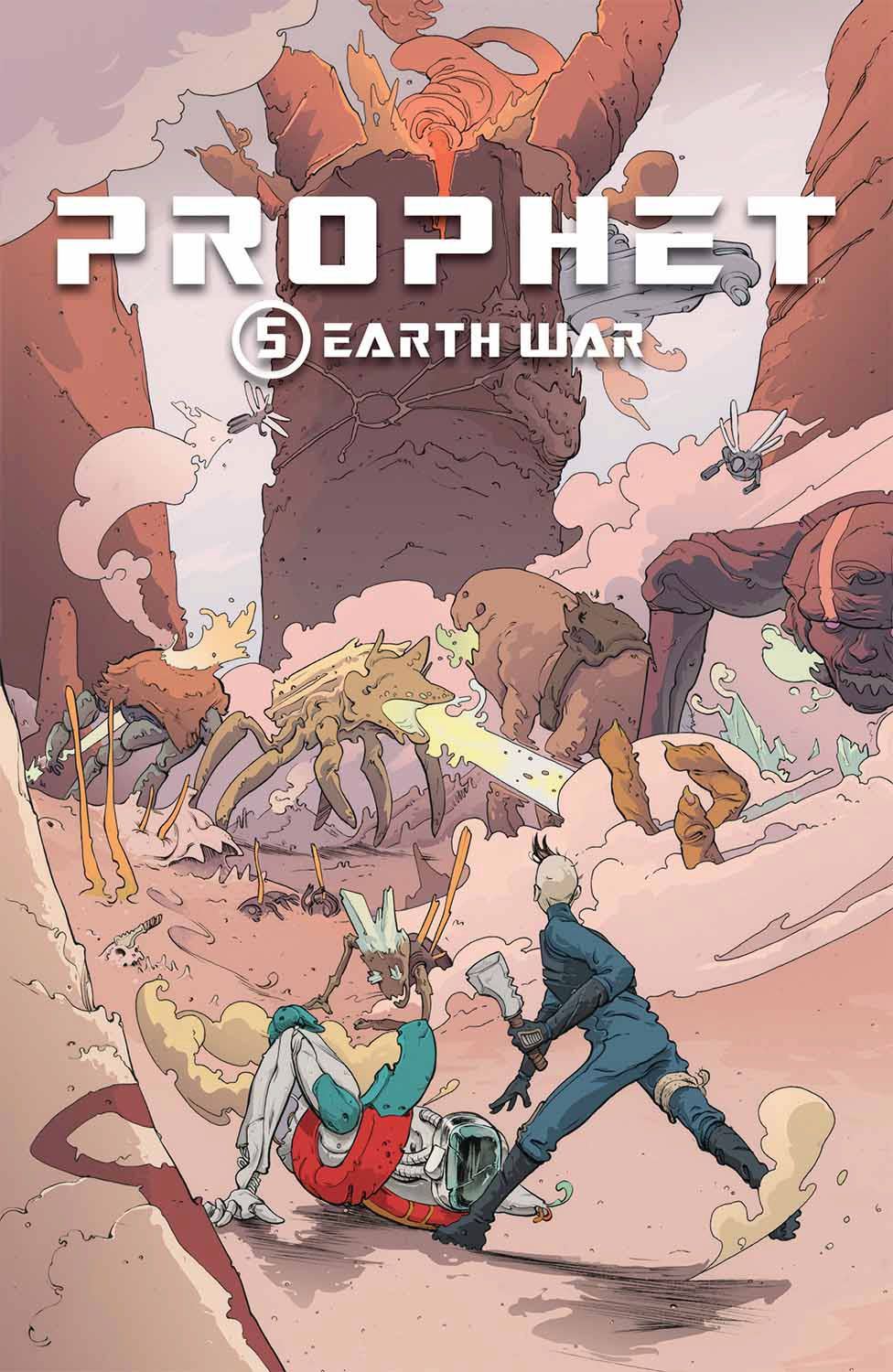Heroically strange

And so The Prophet concludes. What started as the ostensible re-boot of a retired and obscure superhero can take its place on the library shelves as one of the most extraordinarily inventive science-fiction comics in the English-language tradition, and hopefully as an enduring element of the canon that is being forged in this second Golden Age of the medium. It is unusual for such a singular vision to emerge from a collaborative process, but this volume is the work of two writers, Brandon Graham and Simon Roy, who are also among its four artists, along with Grim Wilkins and Giannis Milonogiannis. All its contributors have their feet firmly in the underground, and the story has the feel of a space-opera epic shot on hand-held Super 8, with all the colliding sensibilities that implies. Its most obvious antecedents are in the psychedelic bandes dessineés of the 1970s, notably Alejandro Jodorowsky and Jean Giraud’s The Incal and Phillippe Druillet’s Loan Sloane series, but this is clearly a work that emerges from the burgeoning avant-garde of the contemporary American scene, and it’s good to see a publisher like Image standing behind it.
Earth War could be quite an opaque book, I imagine, to a reader who brings too many generic expectations to it: this is the kind of story that is usually straightforwardly told, particularly if its plot is relatively baroque. The plot of this book is extremely simple, and its telling is not exactly gnomic, but it is far from predictable – at times it feels capricious or whimsical, but for the most part it simply feels as though we are observing a future so alien that we are not qualified to ascribe cause and effect. Visually it is often confusing, but this is more a function of the bizarre biomorphology of its characters than of any particularly avant-garde or experimental approach to the art: this is cartooning, simple, iconically representative illustration, but it is the cartooning of bizarre and impossible forms.
Its potential opacity, its refusal to offer an easy interpretation to the casual reader, does not indicate a work which asks to be decoded however. It is not ‘difficult’ in that sense. Instead it offers other pleasures than those that are conventionally associated with space opera or with SF comics. Earth War demands that its reader set aside any desire for clarity or for specificity, and instead immerse themselves in the experience of looking at a sequence of images: its narrative is an affective one, a psychedelic tour through the fevered imaginations of its authors, and in this sense it is a pure comic, one which emphasises only those formal features that are the exclusive preserve of its medium. It is a place of visual immersion and of disorientating motility, in which visual aesthetics supplant plot and dialogue as the motive forces of the narrative. If you want to experience beauty through the medium of science-fiction, don’t look to the highly polished and technically audacious products of the mainstream, but here, to the fringes, where the strange is elevated to the status of the heroic.
 fuck-me-silly-string liked this
fuck-me-silly-string liked this  albertogs1 reblogged this from royalboiler
albertogs1 reblogged this from royalboiler  monte-y-mar-97 liked this
monte-y-mar-97 liked this oso-sweet liked this
mattaproject liked this
angeluscaligo reblogged this from simon-roy
farel-dal liked this
 frontinus liked this
frontinus liked this gat0rgus reblogged this from simon-roy
gat0rgus liked this
christopher-debe---72 liked this
ordheist liked this
spugpow liked this
alaindouglaspark liked this
zemmizemmi liked this
 skookworks liked this
skookworks liked this modesevengraphics liked this
caudabihalda reblogged this from oliverarditi
caudabihalda liked this
siggestript liked this
jonathan-stutz liked this
aaronshattuck liked this
terrible-mechpilot liked this
abstraktalex liked this
lifethenecropolis reblogged this from royalboiler
lifethenecropolis liked this
 vladbad reblogged this from prophetsharing
vladbad reblogged this from prophetsharing  vladbad liked this
vladbad liked this thomasdunnii reblogged this from royalboiler
thomasdunnii liked this
thelodgegazette reblogged this from royalboiler and added:
prophet is real good
 kingkibble liked this
kingkibble liked this fionaruldass liked this
kringelbert-fishtybuns reblogged this from prophetsharing
kringelbert-fishtybuns liked this
 alexander-four liked this
alexander-four liked this go-mgawa liked this
phraximus liked this
 javums liked this
javums liked this senterami liked this
freecaremakefix liked this
 skater2112 liked this
skater2112 liked this speakingofcomics liked this
 wheeleyme liked this
wheeleyme liked this oliverarditi posted this
- Show more notes